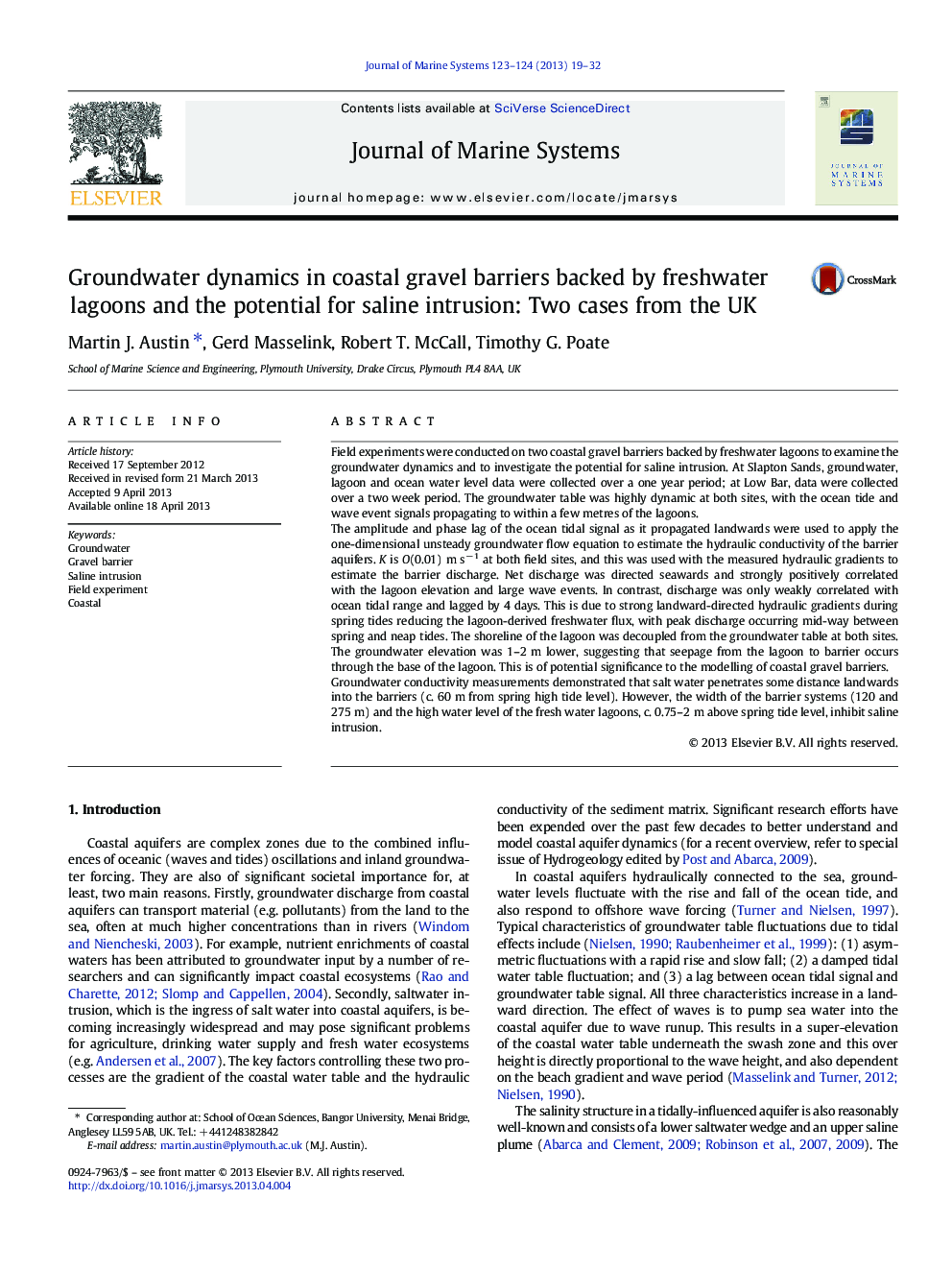| Article ID | Journal | Published Year | Pages | File Type |
|---|---|---|---|---|
| 4548108 | Journal of Marine Systems | 2013 | 14 Pages |
•Groundwater dynamics across a coastal gravel barrier is backed by a freshwater lagoon.•Highly dynamic system is forced by ocean tides and waves, and the lagoon elevation.•Net groundwater discharge is directed seawards and controlled by the lagoon elevation.•Groundwater conductivity decays rapidly in a landwards direction.•The potential for saline intrusion into the lagoon is low.
Field experiments were conducted on two coastal gravel barriers backed by freshwater lagoons to examine the groundwater dynamics and to investigate the potential for saline intrusion. At Slapton Sands, groundwater, lagoon and ocean water level data were collected over a one year period; at Low Bar, data were collected over a two week period. The groundwater table was highly dynamic at both sites, with the ocean tide and wave event signals propagating to within a few metres of the lagoons.The amplitude and phase lag of the ocean tidal signal as it propagated landwards were used to apply the one-dimensional unsteady groundwater flow equation to estimate the hydraulic conductivity of the barrier aquifers. K is O(0.01) m s− 1 at both field sites, and this was used with the measured hydraulic gradients to estimate the barrier discharge. Net discharge was directed seawards and strongly positively correlated with the lagoon elevation and large wave events. In contrast, discharge was only weakly correlated with ocean tidal range and lagged by 4 days. This is due to strong landward-directed hydraulic gradients during spring tides reducing the lagoon-derived freshwater flux, with peak discharge occurring mid-way between spring and neap tides. The shoreline of the lagoon was decoupled from the groundwater table at both sites. The groundwater elevation was 1–2 m lower, suggesting that seepage from the lagoon to barrier occurs through the base of the lagoon. This is of potential significance to the modelling of coastal gravel barriers.Groundwater conductivity measurements demonstrated that salt water penetrates some distance landwards into the barriers (c. 60 m from spring high tide level). However, the width of the barrier systems (120 and 275 m) and the high water level of the fresh water lagoons, c. 0.75–2 m above spring tide level, inhibit saline intrusion.
